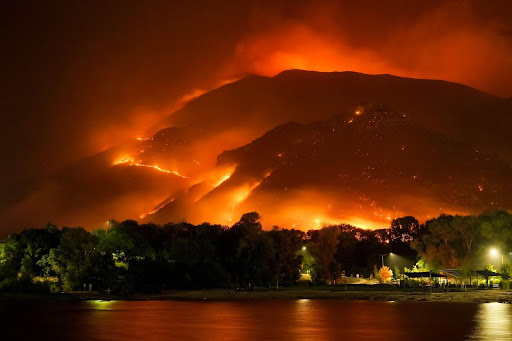During the summer of 2023, the Southwest U.S. fried for a month straight, the town of Lahaina, HI lost 115 people to a wildfire that was initially believed to have been contained. More fires struck Canada and Greece, catastrophic flooding impacting the U.S., Asia, South America, and Europe; the Libyan city of Derna was left in ruins by a Mediterranean cyclone (the death toll from this particular disaster is 11,000 and climbing).
While many blame inadequate warning systems and delayed rescues for casualties incurred during these events, these were contributing factors to a much more widespread disaster. The weather this summer was particularly savage due to a steadily warming climate.
Earlier this summer, Cleveland felt the side effects of the Canadian fires. Anyone who was present in Northeast OH during that period felt the hot, dry, smoky air that drifted south. While those fires burned, flash floods in Connecticut and upstate New York caused damage in areas previously believed to be low-risk.
July brought skyrocketing temperatures across the Northern Hemisphere, resulting in a combination of droughts and storms, depending on the location. The damage caused to the U.S. economy by extreme heat alone runs up to $100 billion annually, owing to damaged crops, rising energy costs and healthcare and decreasing tourism. August saw America’s deadliest wildfire for over a century in Hawaii, and the opening weeks of September seem to indicate that the extreme weather is far from over. Council on Foreign Relations Senior Fellow Alice Hill, noted: “Never has the destructive force of climate change revealed itself so widely across the globe.”
So, what went wrong on such a scale? Summers have brought high temperatures before, but this scale of extreme weather is unprecedented, even for an El Niño year. The answer is the steady rising of ocean temperatures due to greenhouse gas emissions. As the surface heats up, more water evaporates, leading to stronger storms than would be expected in some areas.
At the same time, ocean currents begin slowing, meaning that colder water from the poles does not arrive in other areas, leading to increasing heat and subsequent droughts. This effect was compounded by this year’s El Niño, resulting in unusually frequent and damaging weather. Additionally, the extreme weather conditions struck places that were ill-equipped to handle it: the two dams above Derna crumbled due to a lack of maintenance during Storm Daniel and excessive heat in parts of Europe without air conditioning proved fatal.
Professor John Watling of JCU’s biology department (which also focuses on climate change) compared the excessive heat from the above factors to energy in the climate system; it has sent the water cycle into overdrive worldwide. “Evaporation rates increased, leading to drier conditions even in places that aren’t traditionally dry, like Eastern Canada. At the same time, all that water has to come down, causing high levels of rainfall in areas not used to them, such as Libya.” In other words, one country’s drought becomes another country’s storm.
Some at JCU may be wondering what they can do in this new era of extreme summers. A good first step would be to donate money or items to those affected by weather events. For those who plan on going abroad for immersions, classes or simply for vacations, dress appropriately, keep an eye on weather reports (and on the sky) and have an escape plan in case of flooding or wildfire. Keep in mind that the alarms may or may not activate in time, so don’t rely exclusively on those. Additionally, be on guard even in areas that do not typically experience severe weather.
For a long-term solution, elect people who at least recognize that climate change is a threat that cannot be put off for future generations to deal with. There is some hope, as Professor Watling puts it: “If carbon emissions come to a stop, these extreme weather patterns will slow down over the following decades.” If that happens, future summers might not be as catastrophic as this one has been.


